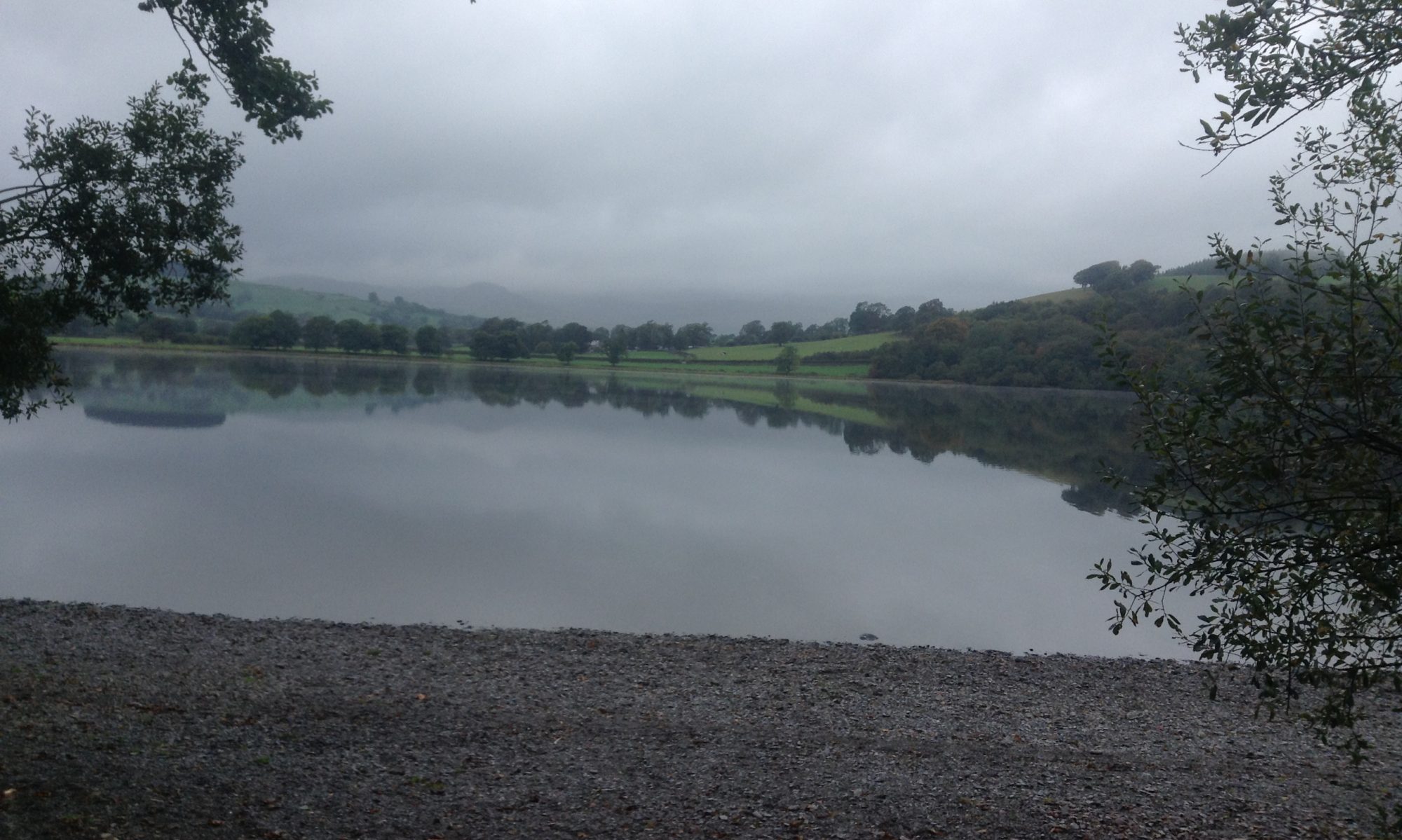
The scholarly retellings of ancient tales can be hard going. The path to the past is often overgrown, the thread of the story difficult to follow as it passes over unfamiliar ground. Far from being work, Damh the Bard’s new album Y Mabinogi makes an ancient Tale new again. I know I’ll be listening to this many, many times, not just for knowledge, but for pleasure and inspiration–as I wait impatiently for the other branches of this tree!
I got lucky the first time I read the First Branch of the Mabinogi. The instructor in the Celtic Literature class I’d taken on a whim really understood these tales, and one of the ones she selected for the class was the First Branch. She taught us that these stories were passed on the breath, from poet to poet, meaning and understanding as vital to the telling as the words and events. She traced the path for us, from the filidh of Ireland and Wales to the bardic schools where the skills of memory, poetry, and philosophy were taught, where a tale written down was a tale killed. She taught us of the changes wrought by the first Christians who arrived in the same era that Viking invaders began killing the living libraries that held that knowledge, how the poets and priests learned from each other, and put the words they had in the cold storage of vellum and ink so they would have a chance to survive. She also showed us how to unpack that knowledge, to make it live again, and to tease out the meanings that lay hidden in the Tales. We all lived for those classes, to spend one evening a week with red-eared hounds, goddesses of sovereignty in the form of horses, or hags, and Tales chosen with care, to complement and illuminate each other. During her office hours, a line always stretched down the hall. When I listened to this album her wisdom and learning came to mind.
Damh the Bard understands these Tales in his very bones. His new album, Y Mabinogi brings the First Branch of the Mabinogi to life for our time. It is as close as we’re ever going to come to that spellbound tribe around the fire, listening to a gifted poet tell the tales that inspired a people, showed them who they were and how to live lives of connection with their past, present, and future. On his breath floats the wisdom and the beauty of the living tale, and somehow he straddles the past and the present to bring it to life again for our time. In our Now, it’s time for all of us to gather around fires, in concert halls, and yes, around iPods and speakers to share the stories of all peoples. We are living in an amazing moment in time, where we have a chance to experience the living threads of story that make up the wisdom of our whole world and learn from them all. We needn’t fear difference when we have the chance to celebrate it, and Damh’s inspired telling of this pan-Celtic Tale is something to savor, to be carried away by.
These tales were never meant to be hard work, at least in the listening. They were the movies, novels, and albums of their time. They were teaching tales, political commentary, serving as the warp of familiarity that a trained member of the Druidic class could and did use to weave the messages the people and the nobles needed to hear. The different recensions of each story that have come down to us, separated in time, snapshots of a particular era, show the remains of this process clearly. The differences in time and place are in the process of being woven together to give us a clearer picture of the Celtic world and how it changed, but the work is hardly finished. There are still many manuscripts that have not been studied, translated, remade. What might we learn as people are inspired to do the work of scholarship by beautiful retellings like Y Mabinogi?
These Tales can and should be made new again–we are lucky enough to live in a time when some of them have been. Morgan Llywelyn’s novels, for example, are excellent retellings of the Ulster cycle, the coming of the Milesians, etc. OBOD’s courses, among others, use them as teaching tools, as they were in the past before the cultures of the Celtic world were shattered, their living libraries of inspired and highly trained poets killed. What Damh has done, however, seems to me to be a recreation of the kind of performance the oral tradition might have produced–tales that could hold a people in thrall for an evening, or a series of evenings, each installment weaving them closer together in a shared experience. These stories are layered, revealing more to the listener each time they are told, and as a person or a tribe grew in wisdom, the stories grew and changed over time.
The Tale is always the same, but the emphasis and point of view has to change to fit the time it is part of. It has to be relevant to the listener in order to become part of us and whisper to us the insights we need to gain from it. This album has that power. Damh has not only produced an incredible piece of entertainment, he has drawn deeply from the source of inspiration to give us a new version of what each generation had, up until the time these tales were put in written form, and so frozen in time. The path to their power and the passion they inspire became harder and harder to reach as times and languages changed, and the cultural body of knowledge necessary to make sense of them became the province of a few specialist scholars. Luckily for us, the incredible flowering of the nineteenth century and the Celtic Twilight brought us people with the skill and the will to unpack these stories for their age, and inspired enough people to learn their nearly lost languages, to study the remnants of glosses and other materials the last generations of poets had left behind, to bring these stories through to our age and put them in the hands of a new generation of inspired poets. Damh has brought a medieval telling of this Tale into the 21st. century, and given humanity a new snapshot of our understanding of this ancient story. He has edified us, and honored the people who first committed these Tales to writing for a future they would never know.




happy hearing of this fresh blossoming
of enduring natural tales deeply rooted 🙂
LikeLiked by 1 person
very true. this is a wonderful and accessible retelling of these wonderful tales. love the way the tale is told by the son, telling us the tale his father told him. that is how stories are passed on ..
LikeLiked by 1 person
It will be very interesting to see how Branwen’s story is handled. This material is problematic as it is when it comes to women–
LikeLike
Like a plucked string, my heart resonates with the wisdom of your expression, as well as Damh’s…thank you for sharing.
LikeLiked by 1 person